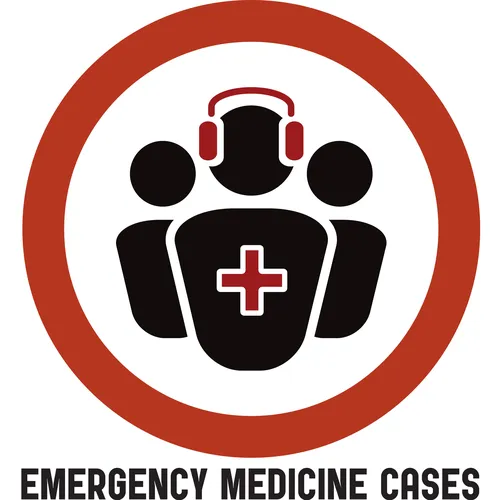EM Quick Hits 36 – Surviving Sepsis, Angle Closure Glaucoma, Bougies, Frostbite, Hot/Altered Patient, Central Cord Syndrome
- Author
- Dr. Anton Helman
- Published
- Tue 01 Mar 2022
- Episode Link
- https://emergencymedicinecases.com/em-quick-hits-march-2022/
Topics in this EM Quick Hits podcast
Brit Long on Surviving Sepsis Campaign: 2021 Updates (0:38)
Nour Khatib on rural medicine case: angle closure glaucoma (11:59)
Reuben Strayer on bougie vs endotracheal tube and stylet on first-attempt intubation (20:51)
Justin Hensley on management of frostbite (31:35)
Sarah Foohey on the hot and altered patient (39:50)
Andrew Petrosoniak on central cord syndrome (47:47)
Podcast production, editing and sound design by Anton Helman
Podcast content, written summary & blog post by Raymond Cho, edited by Anton Helman
Cite this podcast as: Helman, A. Long, B. Khatib, N. Strayer, R. Hensley, J. Foohey, S. Petrosoniak, A. EM Quick Hits 36 - Surviving Sepsis, Angle Closure Glaucoma, Bougies, Frostbite, Hot/Altered Patient, Central Cord Syndrome. Emergency Medicine Cases. March 2022. https://emergencymedicinecases.com/em-quick-hits-march-2022/. Accessed [date].
Surviving Sepsis Campaign: 2021 Updates relevant to EM
Screening for Sepsis
* New guidelines recommend against using qSOFA as a single screening agent
* Commentary: NEWS score is likely a better single screening tool that is easy to use and can be done at triage
Resuscitation
* Fluids
* Guidelines now only suggest rather than recommend using 30 cc/kg of IV crystalloid within the first 30 minutes of resuscitation
* Balanced crystalloids such as Plasmalyte and Lactated Ringer's recommended as a first line over normal saline
* Vasopressors
* In most patients, norepinephrine is the first-line vasopressor, followed by vasopressin, then epinephrine
* In patients with cardiac dysfunction, use norepinephrine as first line then dobutamine or epinephrine alone
* In septic shock resistant to vasopressors, guidelines now support using IV hydrocortisone
* Monitoring resuscitation
* Use dynamic parameters (e.g. passive leg raise, stroke volume/pulse pressure variation, ultrasound) rather than using static parameters
* Point-of-care ultrasound can be used to assess volume status (IVC, B-lines, cardiac activity)
* For patients in septic shock, target a MAP of 65 mmHg
* Adjunctive markers: use capillary refill, lactate to guide resuscitation
* Antimicrobial therapy
* In patients with possible sepsis without shock, consider investigating for other causes for up to 3 hours before starting antimicrobial therapy (adjusted from 1 hour from previous guidelines)
* Choice of antimicrobials in the empiric phase
* High risk of multi-drug resistant organisms: 2 agents with gram negative coverage
* Low risk of multi-drug resistant organisms: 1 agent with gram negative coverage
* High risk of MRSA: provide coverage for MRSA (eg. vancomycin)
* No risk factors for MRSA: no routine MRSA coverage
* Other
* IV vitamin C is not recommended in septic shock
Update 2023: A multicenter randomized controlled trial including 1563 patients with sepsis-induced hypotension refractory to initial treatment with 1-3L of IV fluids comparing a restrictive fluid strategy (prioritizing vasopressors and low intravenous fluid volumes) and a liberal fluid s...
